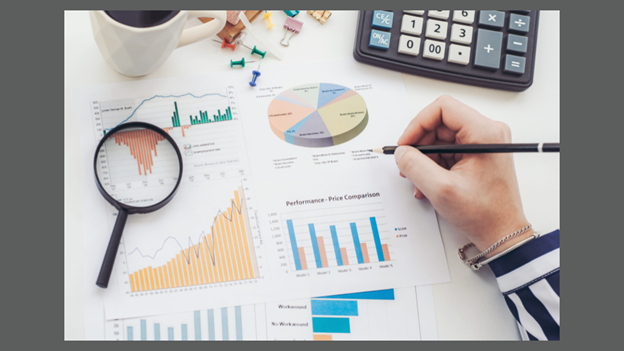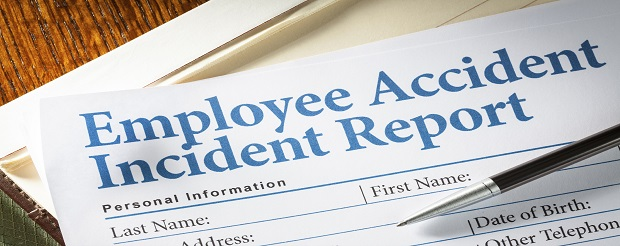Report Forms: Overview, Types, Benefits & Best Practices to Create an Effective Online Report Form
Introduction
Depending on the nature of your profession or the activities you participate in, you may be required to produce several sorts of reports. The working method, objectives, successes, and obstacles experienced are some of the critical information you may be obliged to present. Writing an attractive report helps shareholders make smarter decisions, attracts new investors, and gives you a professional image.
To produce a complete overview of operations, you will need a handbook of several report styles that may provide helpful information about any corporate organization. All of this vital knowledge would assist employees in developing greater interest and performing with concentration. You will also greatly benefit from excellent online report forms.

In this article, we will understand what are report forms, why are they so important for your business, benefits, and much more.
What are Report Forms?
A report form is a type of document or template used to collect and present data or information in a structured and organized manner. It typically includes fields or sections for specific pieces of information, such as dates, names, and other relevant data points.

Report forms are commonly used in various industries and for different purposes, such as in healthcare to track patient information, in finance to report financial data, and in education to track student progress.Report forms can be paper-based or digital, and may be filled out manually or electronically. They are often used to help organizations and individuals keep track of important information and make informed decisions based on that information.

A report form is designed to collect, organize, and present data or information in a structured and standardized format. It is used to communicate important information to a particular audience, such as stakeholders, clients, or colleagues, in a clear and concise manner.

The purpose of a report form is to provide accurate, relevant, and timely information to support decision-making or action-taking. It helps to ensure that information is presented in a consistent and easy-to-understand format, making it easier for the reader to grasp the key points and take appropriate action. Report forms can benefit a wide range of individuals and organizations, including:
1. Businesses: report forms can be used to track sales, expenses, customer feedback, employee performance, and other important metrics.
2. Government agencies: report forms can be used to report on public health data, crime statistics, environmental monitoring, and other issues.
3. Healthcare providers: report forms can be used to document patient information, track medication use, and report adverse events.
4. Educational institutions: report forms can be used to track student progress, report on academic performance, and collect feedback from students.
5. Researchers: report forms can be used to collect data, summarize research findings, and present research results to colleagues and peers.
In summary, report forms are designed to benefit anyone who needs to collect and communicate data or information in a structured and organized way. They help to ensure that information is accurate, relevant, and presented in a clear and concise manner, making it easier for the reader to understand and take action based on that information.
Use Cases of Report Form Templates
A) Expense Report Forms
Expense report forms are documents or templates used to record and track expenses incurred by an individual or organization. They are typically used by employees to report business expenses incurred during work-related travel or other work-related activities.
Expense report forms usually include fields for entering details such as the date of the expense, the purpose of the expense, the amount spent, and any receipts or other documentation to support the expense. The form may also include fields for entering the name of the vendor or supplier, the category of the expense (e.g. travel, meals, accommodation), and any approval signatures required.

Expense report forms are important because they help organizations to track and manage their expenses, and ensure that employees are adhering to the organization's expense policies and guidelines. They can also help employees to get reimbursed for expenses in a timely manner, and to ensure that they are not personally responsible for covering expenses incurred on behalf of their employer.
Expense report forms can be paper-based or digital, and may be filled out manually or electronically. They are typically submitted to a supervisor or manager for approval before being processed for reimbursement.
B) Incident Report Form
An incident report form is a document used to record details of any unexpected or adverse event that occurs within an organization. Incident report forms are typically used to document workplace accidents, near-misses, security breaches, or any other incidents that require investigation and follow-up.
The purpose of an incident report form is to capture important information about an incident in a standardized format. It may include fields for entering the date and time of the incident, the location, a description of what happened, the names of any witnesses, and any relevant photos or other documentation. The form may also include fields for assessing the severity of the incident, the cause of the incident, and any corrective actions are taken.

Incident report forms are important because they help organizations identify potential risks and hazards, and take steps to prevent future incidents. They also provide a record of the incident, which can be used for legal or insurance purposes.
Depending on the organization, incident report forms may be paper-based or digital and may be filled out by the person who witnessed or experienced the incident, by a designated safety officer, or by other responsible parties. Incident report forms may also be required by regulatory agencies or industry standards, such as the Occupational Safety and Health Administration (OSHA) in the United States.
C) Progress Report Form
A progress report form is a document used to track and report on the status of a project or task. The form is typically used by project managers or team leaders to update stakeholders on the progress of a project or to communicate any issues or challenges that may arise during the project.

The purpose of a progress report form is to provide a structured way of reporting on the status of a project, including details such as what has been accomplished, what is still pending, any delays or issues that have arisen, and any actions taken to address these issues. The form may include fields for entering the project name, start and end dates, the names of team members or stakeholders involved, and any milestones or deadlines that have been set.
Progress report forms are important because they help to ensure that a project stays on track and that stakeholders are kept informed of its progress. They can also help to identify potential issues or delays early on, allowing for corrective action to be taken before the project falls behind schedule. Progress report forms can be paper-based or digital, and may be filled out on a regular basis (such as weekly or monthly) or as needed. They are typically reviewed by the project manager or team leader and may be shared with other stakeholders such as clients, executives, or team members.
D) Financial Report Form
Every type of paper trail counts, and every company should use what they have to their advantage. Try using this free receipt maker to help you create such a paper trail. Add a little customization and branding, and your clients will appreciate it, and you’ll have what you need to include in financial reports.
A financial report form is a document used to summarize an organization's financial activities and performance over a specified period of time. The form is typically used by financial professionals such as accountants, financial analysts, or business managers to report on the financial health of a business or organization.
The purpose of a financial report form is to provide a snapshot of an organization's financial performance, including details such as revenue, expenses, profits or losses, assets, and liabilities. The form may include fields for entering financial data from different sources, such as balance sheets, income statements, and cash flow statements.

Financial report forms are important because they provide stakeholders such as investors, creditors, and management with information that can be used to make financial decisions. They can also be used to identify areas where the organization may need to improve its financial performance, such as reducing expenses or increasing revenue.
Financial report forms can be paper-based or digital and may be prepared on a regular basis (such as quarterly or annually) or as needed. They are typically reviewed by financial professionals or management and may be shared with stakeholders such as investors, creditors, or board members.
E) Survey Report Form
A survey report form is a document used to summarize the results of a survey. The form is typically used by researchers or survey administrators to report on the findings of a survey, including the responses and opinions of survey participants.
The purpose of a survey report form is to provide a structured way of presenting the results of a survey, including details such as the number of respondents, response rates, and key findings. The form may include fields for entering demographic data about the respondents, as well as the specific questions and response options used in the survey.

Survey report forms are important because they provide valuable insights into the attitudes, opinions, and behaviors of a particular population or group. They can be used to inform decision-making in a variety of settings, such as in market research, social science research, or in the development of public policy.
Survey report forms can be paper-based or digital, and may be prepared on a regular basis (such as after each survey is conducted) or as needed. They are typically reviewed by researchers or survey administrators and may be shared with stakeholders such as clients, management, or the general public.
Benefits of Report Forms
Report forms are one of the most significant vehicles of corporate communication, providing enormous assistance to management activities. Important choices in business, industry, and government are made based on the facts given in reports or the suggestions made in them. It assists managers in planning, organizing, directing, overseeing, and regulating processes.

Here is a list of advantages of Report Forms:
A) Accurate and Precise
The report form provides accurate and exact information that can be verified. There is no room in an investigative report for extraneous or overstated facts. A business report form is carefully crafted, which is why the reporter must pay careful consideration to the facts and organize them precisely.
B) In-Depth Information
A report is created after a thorough assessment of the circumstance and an analysis of the event's wisdom and foresight. It evaluates the information gathered and makes recommendations for managerial actions. So, other than reports, no other communication medium gives this level of detail regarding the issue.
C) Legal Document
A report form is recognized as a legal document, and in some situations, report writing is a legal requirement of the organization. Annual reports, audit reports, directors' reports, and so on are all legal duties for businesses. The report form may also be used as legal proof in court to support any commercial transaction.
D) Permanent Record
The report form serves as the organization's permanent record and may be highly beneficial for future reference. In the event of a lawsuit, the substance of a report is accepted as evidence.
E) There is no possibility of distortion
In the case of an online report form, the message or information is retained and no distortion or alteration to the report is possible. The report is kept as an official record by both the writer and the recipient.
F) Analysis

The report form not only gives facts but also an analytical assessment of the topic. Data acquired from primary and secondary sources are extensively reviewed for fact interpretation and suggestions.
G) Recommendations
The report form offers management the advice they need to take suitable action to overcome the difficulties. The recommendations in the report form are more accurate since they are based on an extensive analysis of the event and the interdependence of numerous components.
H) Fact Finding Tool
A report form is regarded as a fact-finding instrument. The team or committee in charge of compiling the report makes every effort to identify the variables responsible for creating the specific circumstance that is of interest to management. It assists management in recognizing the scenario or problem with its management. It assists management in recognizing the scenario or problem with its many components and developing future policies to address such problem or condition.
I) Unique Communication Method

A report form is regarded as an effective mode of communication. As the recipient has the opportunity to read it repeatedly, the report gives the reader a clear and comprehensive grasp of the message. Furthermore, it is the only written communication form that offers management ideas that other communication methods do not, making it a more effective communication method than others.
J) External Use
Report forms are used for both internal and external communication. Internal reports are utilized internally and are not disseminated outside, however, external reports are generated for various external parties. Annual reports, audit reports, directors' reports, and other reports are created to inform external interested parties so that they may make choices about the company or corporation.
Tips to Create an Effective Report Form
The purpose of creating a report is to capture information in a captivating, engaging, and actionable manner. You want to present your results in a professional and well-planned manner that provides the most relevant information in a short amount of time. This is when design comes into play. Report design now includes interactive components, interesting designs, and navigation bars.
A good report involves both outstanding information and superb design.Here are some tips and tricks to create effective and engaging report forms.
1. Define the Layout and Flow
Your report should have a clear design. Don't try to cram so much information into a single page that it becomes hard or even frustrating to read and comprehend at a glance. You may wish to educate your reader, attract their attention to a certain issue, influence their decision-making, or demonstrate fascinating insights.

The more precise your design, the better the information will flow and express your story. Your report's target audience may be managers or executives who need to know the bottom line promptly. To make this easier, you may choose a report writing structure that guarantees your report is straightforward to read and comprehend. Similarly, you must consider how your graphics will fit in.
Identifying the most important pieces of information is a smart place to start. Starting with some data or a headline and working your way down into a paragraph is a fundamental content hierarchy that works well in a report. You can then add a visual element to make it even more actionable.
2. Use callouts to draw attention to important information
Nobody will recall every data point you mention in your report form. You must create your report form properly and design it such that it is actionable. When creating a marketing report form, a sales analysis report form, or an annual budget report form, you want to convey the most contextually relevant information in a dynamic and easy-to-digest style. This will allow the reader to reach meaningful conclusions more quickly.
Callouts are one method for accomplishing this. These are used to stress the significance of a certain aspect of a report or web page. A report form for a webinar, for example, may indicate attendance participation by gender and industry.
3. Visualizations can help to simplify complex data
If you want to present crucial information in your report form, employ data visualization to make it easier to understand. Assume you're putting together a financial review report for your department. Of course, this would contain a variety of complicated financials, such as spending, budgets, MRR, ARR, CAC, and so on. It can be distressing to see enormous data scattered over pages and screenshots if you offer this information as is.

A better method is to utilize graphics to summarize the info and quickly convey to the reader what's essential. Charts, graphs, pictographs, and other visuals offer a component to your report form that words cannot. So, if you have a report about supply and demand in the context of retail business, it is better to use a supply and demand graph to visually represent the data.
4. Use Interactive Elements
Interactive elements are strong and easy-to-use components that have a significant influence on your report. Adding interactive features to a marketing brochure or a budget report may help you create a wonderful user experience.Animations and gestures are common interactive UI components that offer a responsive experience.
5. Brand your Report Form
Consider including your company's logo, color scheme, title, and font within your report form to assist you highlight your brand. Whether you're writing a report for internal or external stakeholders, it should be a representation of your company's brand. To preserve unity and consistency, it should include not just your brand's look but also its personality.

Giving your content and design a fast run to check if anything appears odd, and keeping an eye out for any specific aspects you should cut, is a simple method to achieve this.
6. Create Report Templates That Can Be Used Again and Again
Creating a report form template is a simple yet effective technique to ensure that your designs are consistent and unified. Consider this. The amount of time it takes to get every piece, written and graphic, in place is one of the most difficult aspects of developing a report.
So, if you make reports on a frequent basis, you're considerably better off developing well-designed report form templates that you can quickly choose and work on without worrying about how the report will ultimately look.
A well-designed report template should ideally have a number of features that you may mix and match to meet your specific requirements. The visual foundations of your report include charts, photos, headers, callouts, and font family, which will instantly speed up the report creation process.
Q/A
1. What is the purpose of report forms?
Report forms are used to summarize and present information in a structured and organized way. They help to provide clarity and insight into complex data, making it easier to communicate important information to stakeholders, make informed decisions, and identify areas for improvement.
2. What types of report forms are there?
There are various types of report forms, including financial report forms, incident report forms, progress report forms, survey report forms, and more. The specific type of report form used will depend on the nature of the information being reported.
3. What are some key elements of a report form?
Key elements of a report form may include fields for entering data, such as demographic information, survey responses, financial data, or incident details. The form may also include sections for summarizing key findings, identifying trends, and providing recommendations or next steps.
4. How are report forms used?
Report forms are typically used by professionals in various industries, including finance, healthcare, research, and more. They may be used to communicate important information to stakeholders, track progress over time, identify areas for improvement, or inform decision-making.
5. What are some best practices for creating effective report forms?
Best practices for creating effective report forms may include ensuring that the form is easy to understand and use, using clear and concise language, presenting data in a visually appealing way, and ensuring that the form is accessible to all users. It is also important to regularly review and update report forms to ensure that they continue to meet the needs of users.
Concluding Thoughts
Report forms are essential tools for summarizing and presenting information in a structured and organized way. Whether used to document financial performance, incidents, or survey results, report forms help to provide clarity and insight into complex data.
By using report forms, individuals and organizations can effectively communicate important information to stakeholders, make informed decisions, and identify areas for improvement. The versatility of report forms makes them a valuable tool in various industries and fields, highlighting the importance of creating effective and informative forms.
Using a form builder tool implies meeting all of those requests with a single strike: reports, charts, invoices, labels, forms, or lists. Drag-and-drop functionality, design schemes, multiple wizards, a large range of objects like tables, charts, pictures, formatted text, and much more make it simple for you and your end users to construct and design their own layouts and results that are personalized to their specific needs.
Choosing a form builder tool like LeadGen App will definitely benefit you: easier implementation and connection, less work for maintenance services, a current and always optimized interface, and an unequaled range of features. All of these factors contribute to a highly anticipated product for your consumer.





